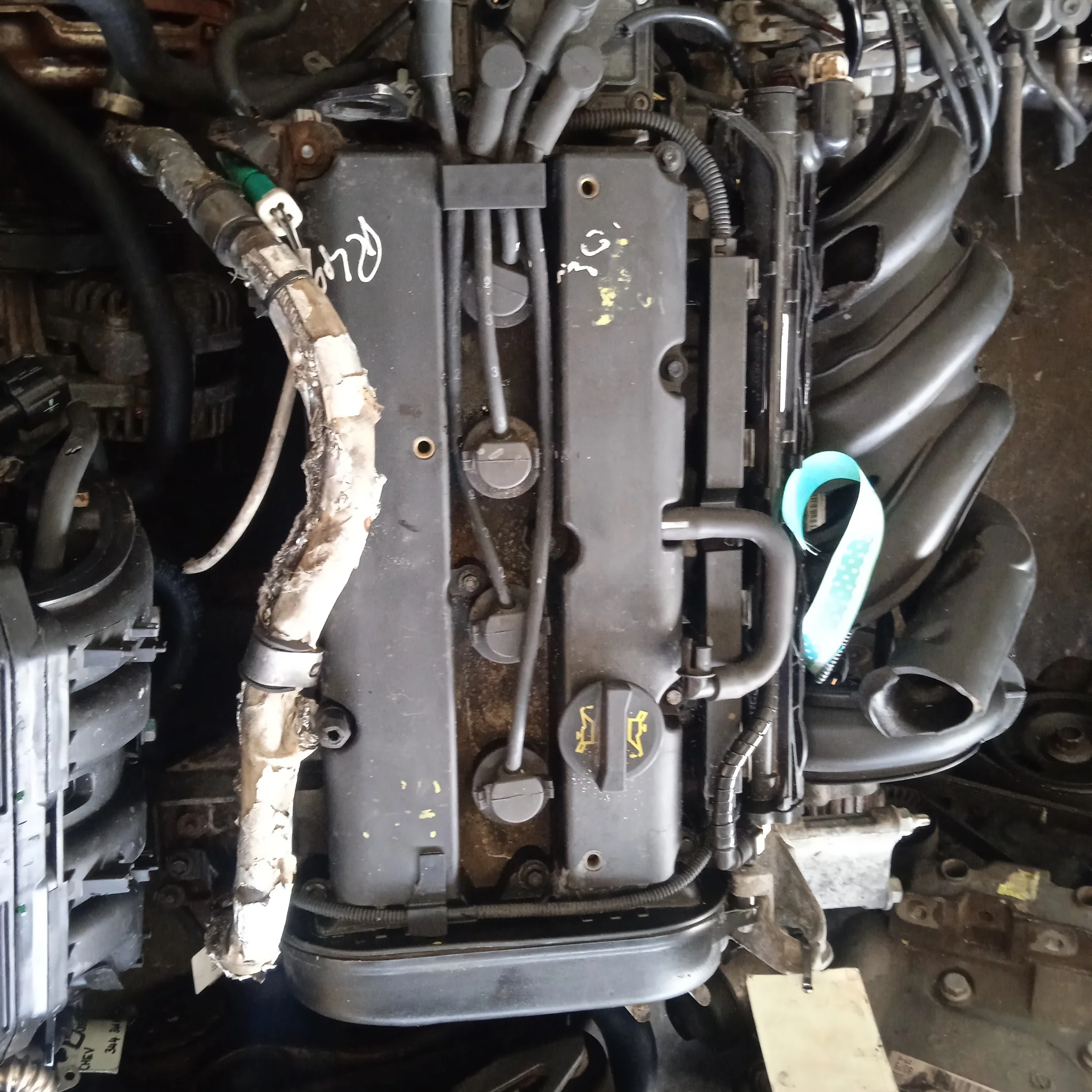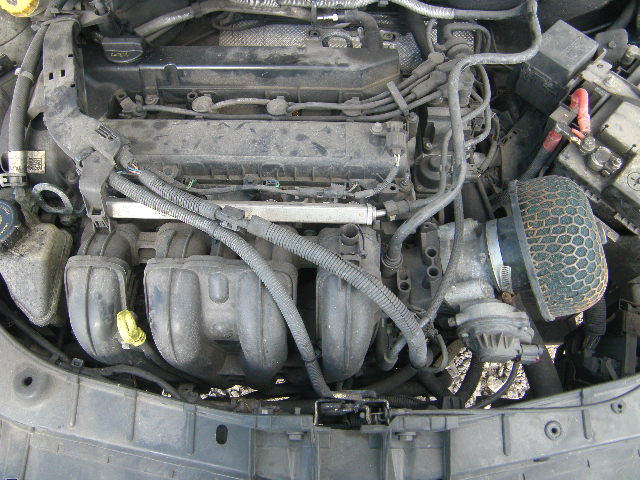Expert Tips for Optimizing Your Ford Fiesta Engine Efficiency
Expert Tips for Optimizing Your Ford Fiesta Engine Efficiency
Blog Article
Exploring the Development of Engines: From Classic Layouts to Modern Marvels
The advancement of engine innovation represents a considerable narrative in the history of advancement, noted by critical improvements that have continually redefined transport and market. From the preliminary heavy steam engines that powered the Industrial Transformation to the development of interior combustion engines that changed mobility, each phase has contributed to greater efficiency and ability. Currently, the transition to electrical power represents not just a technological shift yet likewise a more comprehensive dedication to environmental sustainability. As we examine these milestones, one must consider just how the future of engine style might unravel, challenging our assumptions of power and efficiency.
The Birth of Engine Innovation
The development of engine technology marked an essential minute in human technology, transforming energy conversion and transportation. The earliest engines emerged from the demand to harness mechanical power for practical use, leading to the advancement of tools that transformed various power forms into activity (ford fiesta engine).
The growth of the inner burning engine and the innovation of the vapor engine militarized a profound shift in industrial capabilities. These engines not only enhanced effectiveness yet additionally increased the range of human mobility, allowing extraordinary transportation possibilities. The very early prototypes laid the foundation for the mechanized world, promoting the increase of sectors and reshaping societal frameworks.
As engine styles advanced, they included cutting-edge products and advanced engineering concepts, leading the way for modern-day growths - ford fiesta engine. The birth of engine innovation ignited an unrelenting quest of efficiency and power, setting the stage for the dynamic development of transport and industrial machinery that would adhere to
Heavy Steam Engines and Their Influence

The steam engine's influence was particularly obvious in the transport sector (ford fiesta engine). Steam-powered locomotives helped with the rapid motion of goods and people throughout large ranges, effectively shrinking the geographical obstacles that had actually formerly prevented trade and interaction. Similarly, steamships reinvented maritime travel, enabling quicker and more trustworthy crossings of rivers and oceans.
In industry, vapor engines powered factories, enabling mass manufacturing and the rise of city centers as centers of financial task. Steam innovation promoted developments in design and production processes, laying the foundation for future innovations in engine design.
The Rise of Interior Burning
Often outweighing heavy steam power, the rise of internal combustion engines marked a transformative shift in transportation and industry throughout the late 19th and early 20th centuries. The growth of these engines, identified by their capability to burn fuel within the engine itself, enabled higher performance and power compared to typical steam engines. Introducing innovators such as Nikolaus Otto and Rudolf Diesel played vital roles in perfecting engine layouts, causing prevalent adoption in autos, boats, and commercial machinery.
The interior combustion engine's compact dimension and reasonably light-weight nature helped with the introduction of personal vehicles, changing specific flexibility and reshaping metropolitan landscapes. By allowing faster traveling and the reliable transportation of items, these engines militarized economic development and promoted globalization. The versatility of gas options, including gasoline and diesel, further boosted their allure, permitting for varied applications throughout various fields.
Despite the environmental issues that would later on develop, the preliminary attraction of internal burning modern technology lay in its transformative potential. As society embraced this technology, the foundation was laid for modern-day transport systems, developing internal combustion engines as a keystone of industrial innovation and every day life throughout the 20th century.
Advancements in Engine Efficiency
As inner combustion engines ended up being integral to transportation and sector, the focus moved in the direction of boosting their effectiveness to meet growing demands for efficiency and sustainability. Innovations in engine style, product scientific research, and innovation have actually substantially added to this evolution.
One major advancement is the advancement of turbocharging, which permits for raised air consumption, causing more total fuel combustion and enhanced power result without expanding engine size. Furthermore, variable valve timing systems have been applied to optimize engine efficiency throughout various RPM ranges, thereby improving fuel performance.
The application of advanced gas injection innovations, such as straight injection, has also played a vital duty. This approach enables more accurate control over the fuel-air blend, advertising much better combustion and decreasing discharges. In addition, light-weight materials, consisting of light weight aluminum and composite elements, have been taken on to minimize total engine weight, causing improved performance.
These developments reflect a wider fad within the automobile market, where the synergy between engineering advancement and environmental factors to consider drives the recurring pursuit for greater performance in interior burning engines. Therefore, contemporary engines are now extra powerful, cleaner, and reliable than ever, leading the method for an extra sustainable future in transportation.
The Shift to Electric Power
With expanding worries over environmental influence and nonrenewable fuel source reliance, the automotive market is experiencing a considerable change towards electrical power. This change is driven by a combination of technical innovations, regulative stress, and changing customer choices. Electric vehicles (EVs) use a compelling option to standard internal burning engines, boasting reduced greenhouse gas emissions and reduced operating expense.
The rise of battery modern technology Full Report has actually been a game changer, with lithium-ion batteries coming to be much more affordable and effective. Boosted power density and faster charging capacities have actually made EVs more sensible for everyday use. Furthermore, governments worldwide are applying rewards and establishing enthusiastic targets for terminating nonrenewable fuel source automobiles, thereby speeding up the fostering of electrical power.
Significant automakers are spending heavily in research and development, causing the introduction of a varied variety of electrical versions. This consists of not just auto however additionally business lorries and public transportation remedies. As billing framework expands and battery modern technology proceeds to enhance, the change to electrical power is poised to reshape the vehicle landscape, promoting sustainability and advancement in the years to find. The future of transportation is electric, and the energy is indisputable.
Final Thought
The advancement of engine modern technology read here represents a significant trajectory of advancement that has actually greatly influenced transport and industry. From the foundational heavy steam engines to the transformative internal combustion engines, each growth has contributed to improved flexibility and economic development.

Report this page